It Had to Happen
Brief Synopsis
Cast & Crew
Roy Del Ruth
George Raft
Rosalind Russell
Leo Carrillo
Arline Judge
Alan Dinehart
Film Details
Technical Specs

Synopsis
Disappointed at the opportunites for work afforded them, Italian immigrants Enrico Scaffa and Giuseppe Badjagaloupe get jobs as ditch diggers on a busy New York street. After the foreman gives Rico a red flag to stop traffic before an explosion, he begins to savor the taste of power that the flag gives him. Among the cars he enjoys stopping are the limousine of Beatrice Newnes, who complains that she is late for the races at Belmont, and that of the mayor, who becomes impressed with Rico's character and hires him as an assistant. Rico soon is feared as an unseen power, and when he learns that his district's branch of the Hudson Investment Trust is about to go under, he orders the district attorney to summon a special session of the grand jury to investigate because his people have their life savings invested there. Rico visits Rodman Drake, the head of the trust, who has married Beatrice, and tells him that the only way he can avoid the penitentiary is to give him four million dollars which, he says, he will see gets put back into the corporation before the examiner goes over the books. Drake agrees, but flies to Cuba in case there are problems. Rico, who says he has never had Beatrice out of his mind since he first saw her, persists in pursuing her and wagers a chance to take her to dinner that his horse, White Wing, will beat her horse, Lady Ann, in the upcoming race at Saratoga. After White Wing wins by a nose, Beatrice invites him to dinner, but after a romantic night, she finds that Drake has returned. She asks him for a divorce and says that she wants to marry Rico, but Drake begs her to remain because, he says, he needs her badly now. Beatrice and Rico agree not to see each other for two months. When one of the district attorney's men, John Pelkey, who has a grudge against Rico, tells Drake that Rico never deposited the four million dollars in the corporation, Drake agrees to cooperate in a grand jury investigation. Beatrice refuses to believe the accusation against Rico, and Drake orders her out of his house. After Rico tells Beatrice that he put the money into the trust, she agrees to marry him. Rico refuses to testify before the grand jury and thus implicate some innocent people who helped him secretly deposit the four million after the state examiner got hold the books so that Drake would not get caught. After his attorney advises him to leave the country until he can beat the indictment, Rico plans to go with Beatrice to Canada, where she can file for a divorce, but she walks out on him because she thinks he wants to run away like Drake instead of facing the charges like a man. Rico then grabs his red flag and interrupts the grand jury proceedings. He admits that he falsified records, but proves, through questioning Drake, that he did deposit the four million dollars. After he explains that he did it to avert a public scandal which threatened to undermine the confidence of depositors and investors, the district attorney concedes that he has been misled, and the proceedings are disbanded. Rico punches Pelkey and then awakens Beatrice, and still holding the red flag, tells her to get dressed and go to Reno for her divorce. He says he has to remain to take care of the people in town who accused him of taking a bribe, and after informing her that it is her job to love him until she dies, he orders her to kiss him, which she does again and again.

Director

Roy Del Ruth
Cast

George Raft

Rosalind Russell

Leo Carrillo

Arline Judge

Alan Dinehart
Andrew Tombes
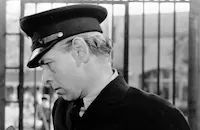
Arthur Hohl
Paul Stanton

Pierre Watkins
Stanley Fields

George Irving
Thomas Jackson
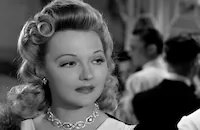
Astrid Allwyn
George Humbert
Nina Campana
Margaret Bloodgood
Harry C. Bradley

Clay Clement
John Sheehan

James Burke
Frank Meredith
Frank De Voe
Gladden James
Bud Geary
Torben Meyer
Robert E. O'connor
Selmer Jackson
Wallis Clark
Matt Mchugh
Michael Romano
Inez Palange
George Bookasta
Tommy Bupp
Raymond Turner
Frank Moran
John Kelly
Ben Taggart
Harry Stubbs
John Dilson
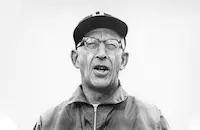
Charles Lane
Lloyd Whitlock
John Hyams
Jack Hatfield
J. Anthony Hughes
Sam Ash
Cully Richards
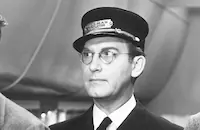
Emmett Vogan
Franklyn Ardell
Herbert Heywood
Curtis Benton
Edward Cooper

Pauline Garon
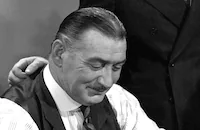
Edward Keane
Paul Hurst
Ben Hendricks
Jack Curtis
James Dundee
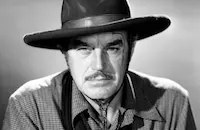
Harry Woods
G. Pat Collins
James C. Morton
Loo Loy
Maxine Reiner
Crew
Ed. Ebele
Gene Fowler
Raymond Griffith
Wallace Grissell
Eugene Grossman
Roger Heman
Norman Krasna
Arthur Lange
Thomas Little
Peverell Marley
Alan Mcneil
Hans Peters
Harry Reynolds
Allen Rivkin
Aidan Roark
Kathryn Scola
Ben Silvey
Howard Ellis Smith
Gwen Wakeling
Darryl F. Zanuck

Film Details
Technical Specs

Quotes
Trivia
Notes
The only screen credits on the print viewed were end credits listing actors and their roles; the above credits not in brackets were taken from company records listing screen credits in the Twentieth Century-Fox Records of the Legal Department at the UCLA Theater Arts Library. 20th Century Pictures, Inc. originally planned to produce this film, with Clark Gable and Constance Bennett, according to a Hollywood Reporter news item. According to the Variety review for the 1915 film The Danger Signal, produced by George Kleine, directed by Walter Irwin and starring Arthur Hoops, the original story was inspired by the life of former Tammany Hall boss Richard Croker. Notes from Darryl F. Zanuck concerning It Had to Happen, which was called at the time Canavan, beginning September 17, 1934 and a script as late as March 30, 1935 give the main character as an Irish immigrant named Canavan. In a script of October 8, 1935, the main character is called Scaffa. At the beginning of a screenplay for the film in the Twentieth Century-Fox Produced Scripts Collection, also at UCLA, a quotation from the works of Friar Abbott (1659-1730) gives the source of the title: "Though there be the world between them, if it be ordained that this woman and this man are to be one, then so it will be; and no matter it take a lifetime ere these two can look upon each other in union-still, there can be no doubt, it had to happen."
According to information in the legal records, Edith Ellis was assigned as a writer on this film, but none of her material was used. Bert Glennon is listed for photography on an early advertising billing sheet, but it is not known if Glennon actually worked on any part of the film. According to a Hollywood Reporter news item, director Roy Del Ruth called actor James Burke back in January 1936 for a week's shooting to build up his part. According to New York Times, a few years earlier, when the censors complained about crime pictures, George Raft was assigned by Paramount to dancing pictures, which were deadly for his career; this was his first crime film since the earlier period. According to information in the MPAA/PCA Collection at the AMPAS Library, Joseph Breen, the PCA director, objected to a scene in the final shooting script from which an adulterous situation involving the character "John Pelkey" was implied; appropriate lines were subsequently deleted. In addition to the 1915 George Kleine production mentioned above, another film based on the same source was produced in 1921 and entitled Hold Your Horses, which was directed by E. Mason Hopper and starred Tom Moore.












